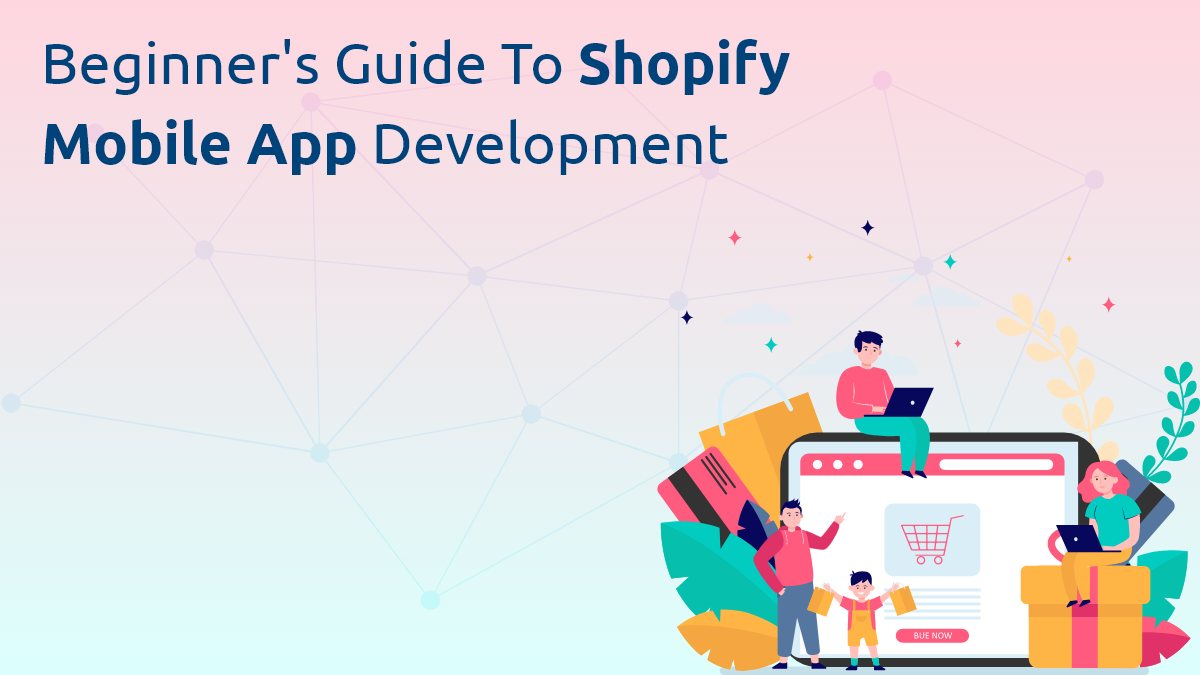Beginner's Guide to Shopify Mobile App Development

Shopify has revolutionized the world of e-commerce, offering a user-friendly platform for businesses to create and manage their online stores. With the increasing popularity of mobile commerce, having a mobile app for your Shopify store is essential to reach a wider audience and provide a seamless shopping experience. If you're new to Shopify mobile app builder development, this beginner's guide will walk you through the basics and help you get started on your app development journey.
Understanding Shopify Mobile App Development
Shopify mobile app development refers to the process of creating a mobile application specifically tailored for your Shopify store. These apps allow customers to browse products, make purchases, track orders, and engage with your brand directly from their mobile devices. Shopify provides various tools and resources to simplify the app development process for beginners.
Key Concepts
- Mobile App Architecture: Understand the structure and components of a mobile app, including user interface, backend services, and data storage.
- Shopify APIs: Familiarize yourself with Shopify's APIs to integrate your mobile app with your Shopify store's data and functionalities.
- Development Tools: Explore development tools such as Shopify Mobile App Builder, Shopify App Store, and Shopify Mobile SDK for building and customizing mobile apps.
Step 1: Set Up Your Shopify Store
Before diving into mobile app development, ensure you have a Shopify store set up with products, collections, and a payment gateway configured. This step is crucial as your mobile app will sync with your Shopify store to provide a seamless shopping experience for users.
Setup Checklist
- Create a Shopify account and choose a subscription plan.
- Add products, set pricing, and organize into collections.
- Configure shipping and payment options.
- Customize your store's theme to reflect your brand identity.
Step 2: Choose a Mobile App Development Approach
Shopify offers multiple approaches to mobile app development, catering to different skill levels and requirements. Choose an approach that suits your expertise and goals:
Development Approaches
- Shopify Mobile App Builder: Ideal for beginners with its drag-and-drop interface and pre-designed templates.
- Shopify App Store: Explore third-party app builders and extensions for advanced customization options.
- Shopify Mobile SDK: For developers looking to build custom mobile apps using Shopify's APIs and libraries.
Step 3: Design Your Mobile App Interface
Once you've chosen a development approach, it's time to design your mobile app's interface. Focus on creating a user-friendly and visually appealing design that aligns with your brand's aesthetics.
Design Tips
- Keep the navigation simple and intuitive.
- Use high-resolution images and clear product descriptions.
- Ensure mobile responsiveness for seamless viewing on different devices.
- Incorporate branding elements such as logos, colors, and fonts.
Step 4: Develop App Features and Functionalities
Enhance your mobile app with essential features and functionalities that improve the shopping experience for users. Consider integrating features like product catalogs, search functionality, secure checkout, and order tracking.
Key Features to Include
- Product Listings: Display products with images, descriptions, and pricing.
- Shopping Cart: Allow users to add items to the cart and proceed to checkout.
- Payment Integration: Integrate secure payment gateways for seamless transactions.
- Order Tracking: Provide real-time order status updates for customers.
- Push Notifications: Keep users informed about promotions, discounts, and order updates.
Step 5: Integrate with Shopify APIs
To sync your mobile app with your Shopify store's data and functionalities, integrate Shopify APIs into your app's backend. This integration ensures real-time updates on products, inventory, orders, and customer information.
Integration Steps
- Obtain Shopify API credentials from your Shopify account.
- Configure API endpoints for data synchronization.
- Implement API calls in your app's backend code for seamless integration.
Step 6: Test and Debug Your Mobile App
Before launching your mobile app, conduct thorough testing to identify and fix any bugs or issues. Test across different devices, screen sizes, and operating systems to ensure compatibility and optimal performance.
Testing Checklist
- Functional Testing: Test all app features and functionalities.
- Compatibility Testing: Ensure the app works seamlessly on iOS and Android devices.
- User Experience Testing: Gather feedback from beta testers to improve usability.
- Security Testing: Conduct security tests to protect user data and transactions.
Step 7: Publish Your Mobile App
Once testing is complete and your app is ready for launch, publish it on the App Store (for iOS) and Google Play Store (for Android). Follow the guidelines and requirements of each platform to ensure a smooth publishing process.
Publishing Checklist
- Prepare app store listings with descriptive titles, keywords, and screenshots.
- Set pricing and monetization options if applicable.
- Promote your app through marketing channels to drive downloads and user engagement.
Conclusion
Embarking on Shopify mobile app builder development as a beginner may seem daunting, but with the right guidance and resources, it can be a rewarding experience. This guide has provided you with a step-by-step approach to creating a mobile app for your Shopify store, from setting up your store to publishing your app on app stores. By leveraging Shopify's tools, APIs, and development approaches, you can build a mobile app that enhances your brand's visibility, engages customers, and drives sales in the competitive e-commerce landscape.
- best_no_code_mobile_app_builder
- white_label_mobile_app_builder
- no_code_mobile_app_builder
- mobile_app_builder
- best_mobile_app_builder
- shopify_mobile_app_builder
- ecommerce_mobile_app_builder
- online_store_app_builder
- shopify_mobile_app_template
- integrate_shopify_with_android_app
- mobile_app_builder_for_shopify
- best_shopify_mobile_app_builder
- turn_your_shopify_store_into_mobile_app
- Questions and Answers
- Opinion
- Motivational and Inspiring Story
- Technology
- Live and Let live
- Focus
- Geopolitics
- Military-Arms/Equipment
- الحماية
- Economy
- Beasts of Nations
- Machine Tools-The “Mother Industry”
- Art
- Causes
- Crafts
- Dance
- Drinks
- Film/Movie
- Fitness
- Food
- الألعاب
- Gardening
- Health
- الرئيسية
- Literature
- Music
- Networking
- أخرى
- Party
- Religion
- Shopping
- Sports
- Theater
- Health and Wellness
- News
- Culture

